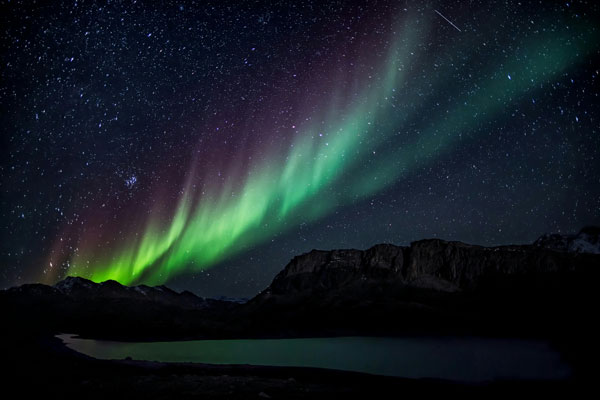Solar storm draws thousands of stargazers

[Photo Credit to Pexels]
On May 10th, thousands of people were seen outside at night gazing at the northern lights formed due to magnetic storms from solar activities.
Solar storms are caused because parts of the Sun’s surface rotate at different rates, as it isn’t solid.
This can cause the sun’s magnetic field to become tangled, and it eventually erupts from the build-up of energy.
This year, in May, NASA detected large solar storm flares and large coronal mass ejections, creating one of the strongest solar storms to reach Earth in two decades, with a diameter 16 times greater than that of Earth.
Solar flares are eruptions of electromagnetic radiation from the Sun’s surface which occur when the magnetic energy that accumulated in the solar atmosphere is released.
CMEs, or Coronal Mass Ejections, are large clouds of ionized gas called plasma.
Between May 3rd and May 9th, NASA’s Solar Dynamics Observatory noted solar flares bubbling from the sun.
On May 7th, the first signs of the solar storm were detected which started with two strong solar flares, later growing into multiple strong solar flares and at least seven CMEs.
With everything perfectly aligned , the activities grew so complex that they erupted into a historic solar storm.
Then, on May 10th, these activities traveled towards Earth, creating a geomagnetic storm, which was one of the most prominent since October 2003.
These powerful solar activities can cause the Northern and Southern lights, which are usually only visible in high latitude areas such as the Arctic and Northern Canada.
However, the rare G5 geomagnetic storm caused auroras to be visible all around the world, such as the southern parts of the US, the southeast of England, and even Northern India.
These brilliant lights were even observed in places as low as 36 degrees in magnetic latitude, making them one of the lowest latitude aurora sightings on record over the past five centuries.
Sometimes, if the solar flares are strong enough, they can disrupt systems on Earth, and not just create breath-taking lights.
Geomagnetic storms can impact infrastructure that is near Earth’s orbit and on the Earth’s surface, such as communications, phone, GPS, and radio.
They can also damage satellites because the geomagnetic storms heat up the outer atmosphere, causing it to expand, which increases the drag on satellites and degrades their orbit.
In addition, solar storms can cause radio blackouts, due to the strong pulse of X-rays and extreme ultraviolet radiation.
As this radiation travels towards Earth at the speed of light, it ionizes the top of the Earth’s atmosphere, causing a higher-density environment for the high frequency shortwave radio signals to travel through long communications.
Therefore, these radio waves that interact with the electrons on the ionized layers lose energy due to higher collisions, leading radio signals to degrade or get absorbed.
In more extreme cases, as the CMEs have their own magnetic field, they can overwhelm power lines by causing electrical currents.
For instance, the Quebec incident of 1989 and the Carrington Event of 1859 recorded the most intense geomagnetic storms ever , which knocked out power grids globally.
If such events were to occur today, they could cause trillions of dollars in damage and bring down power grids for a substantial amount of time.
However, although solar storms can cause significant damage to infrastructure, thankfully, they have no physical impact on humans.

- Hanna Yein Cho / Grade 10
- Yongsan International School of Seoul

![THE HERALD STUDENT REPORTERS [US]](/assets/images/logo_student_us.png)
![THE HERALD STUDENT REPORTERS [Canada]](/assets/images/logo_student_ca.png)
